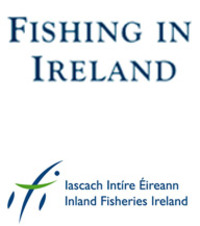


Local Sponsors
-
An angler's guide to the best fishing in Ireland.
Inland Fisheries Ireland. Swords Business Campus Swords Co. Dublin.
Ireland is recognised as being the outstanding fishing holiday destination in Europe. The vast variety and quality of fishing in Ireland makes it the perfect destination for your angling holiday. Please have a look at our guide on our website.
More information
The River Moy, known as An Mhuaidh in Irish, is a river located in the northwest region of Ireland. Historical references indicate that Ptolemy's Geography, written in the 2nd century AD, mentioned a river called Λιβνιου (Libniu), which likely referred to the River Moy. Adomnán's Life of Columba, dating back to around 700, first mentions the Moy as Modam fluvium. Various spellings have been used over time, including Muaide, Muadam, Múed, Múaid, with the modern Irish name An Mhuaidh now being commonly used. The name possibly originates from the Old Irish word "muad," meaning "noble."The River Moy originates at the base of the Ox Mountains in County Sligo and stretches for 110 kilometers (68 mi). Primarily flowing southwest, it enters County Mayo, passing near Swinford and through Foxford, before turning north close to the village of Kilmore and eventually reaching the town of Ballina. At Ballina, the river meets the Atlantic Ocean at Killala Bay. The Moy Estuary extends for eight kilometers (five miles), starting from Ballina and running into Killala Bay. The River Moy has a catchment area of 2,086 km2 and its long-term average flow rate into Killala Bay is 61.5 cubic meters per second (m3/s).The Moy valley is renowned for its ancient churches and abbeys, attracting numerous tourists to the area. In the past, the river boasted one of the finest salmon fisheries in Europe. However, the practice of drift net fishing along the coast led to a significant decline in salmon populations. According to statistics from the central fisheries board, in 2005, 101,231 returning salmon were captured by drift nets off the west coast of Ireland. Additionally, 29% (6,675) of all rod-caught salmon in Ireland that year were taken in the Ballina district, primarily due to a weir that trapped salmon in the ridge pool near the river mouth during the summer. In response to these concerns, drift netting for salmon was prohibited in November 2006, and the ban officially took effect on January 1, 2007.
